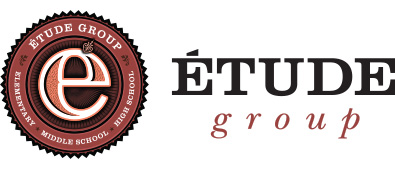Last month, we held a Parent Connections meeting at ESAA. The focus of the meeting was establishing school culture and how we create community among our unique and individual students, families, and teachers.
Parents and teachers started the meeting similar to how students start each day in the classroom, by sharing their personal connections. This time, parents were asked to pick from one of the guiding principles from Responsive Classroom that help form ESAA’s philosophies:
The social and emotional curriculum is as important as the academic curriculum.
How children learn is as important as what they learn.
Great cognitive growth occurs through social interaction.
To be successful academically and socially, children need to learn a set of social and emotional skills that include cooperation, assertiveness, responsibility, empathy, and self-control.
Knowing the children we teach—individually, culturally, and developmentally—is as important as knowing the content we teach.
Knowing the families of the children we teach is as important as knowing the children we teach.
How we, the adults at school, work together is as important as our individual competence: Lasting change begins with the adult community.
In a large circle, the group went in turn expressing which of these statements resonated with them most deeply. With six quotes and a group of about thirty people, there were certainly people who talked about the same statement but each person added their unique voice and experience. We heard from a teacher who valued that individuality in her students, that she liked to witness her students interacting with each other and letting their personalities shine throughout the day. A parent expressed how important she felt it was that adults, by example, teach habits both good and bad. For her, sending her child to ESAA is essentially going from “my house to your house” and that she can feel confident her child is part of a positive and safe community, like a family.
To create that community at ESAA, we take a three-tiered approach to establishing a culture that enables learning and growth. All classrooms follow a set of Universal Practices, such as daily classroom meetings, student-created expectations, and silence and attention cues, to help students create a safe environment conducive to learning. Classrooms are intentionally set up in similar ways. All grades also follow Project-Based Learning, a model that gives students voices and choices in their learning and requires collaboration. The Universal Practices are intentional ways we can ensure that any student feels comfortable and will know what to expect at any time and place in the building. Familiarity and consistency across grades creates a special culture at ESAA for children to thrive.
If a disruptive or unsafe behavior occurs outside of the first tier, Classroom Accommodations for the student, such as sensory tactile tools or special seating, can be made. These accommodations serve to calm a child and empower them to regulate their own behavior. If needed, behavior contracts are signed by the student, the Dean, and parents help keep a student and family aware and involved at this stage.
In the event a student has three contracts in one month on the same issue, daily tracking with the help of a Student Intervention Team (SIT) will follow. This team is comprised of ESAA teachers and staff to address the strengths and weaknesses of the child and create a plan to empower them to succeed. The student also works with the team to regain the trust of their classmates and teacher, ensuring that all students have an active role in their own safety and learning environment. What results is truly a community effort; knowing that each student has a support system that really does makes a difference.
To culminate the meeting, we asked parents to write down their "hopes and dreams" for their child's upcoming school year, just as the students did in their own classes. Each classroom has proudly displayed this list of hopes for the year, so that at any time students and teachers may look back on it and reflect. It is our hope that this list sparked a conversation in each family and will be a point of reflection for the year ahead.

